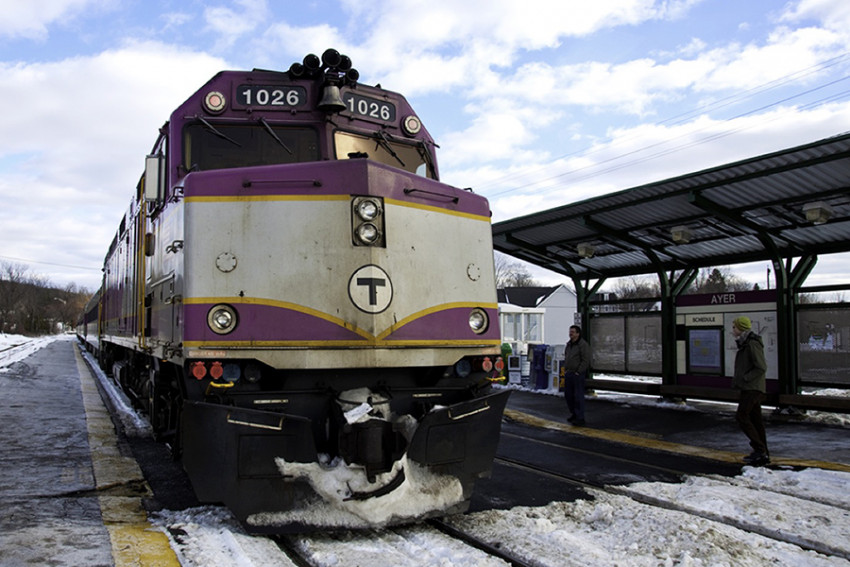
The report shows commuter demand and usage will not only return to pre-pandemic levels but is expected to increase significantly from previous years. To help present their case to both the federal Minister of Transport and VIA Rail Canada, the group has today released: The Case for Getting VIA Train 651 Back on Track: A report on the critical importance of commuter train services for a growing Eastern Ontario, which demonstrates the critical importance for Eastern Ontario commuters to have access to affordable and convenient train transportation rather than making the choice between unemployment or a costly and time-consuming commute. The counties of Northumberland and Hastings, and the cities of Quinte West, Belleville and Kingston, have partnered to press for action by VIA with the release of a new report. Now that Ontario is open again, there is growing concern among residents in this region over the lack of service. As of the end of June 2022, most of VIA Rail Canada's previous train routes have resumed across the country, however Train 651 has not yet been reinstated. Train 651, VIA's commuter train servicing the Kingston to Toronto corridor, was suspended early in the COVID-19 pandemic due to a drop in ridership. We are calling upon VIA Rail Canada to welcome riders back to Train 651." " Eastern Ontario riders need this train to get to work, to get to school for education and training, and to seek needed medical treatments. "With over 2800 commuter responses, our report clearly supports the case for the return of VIA Rail Canada's commuter Train 651," states Bob Sanderson, Northumberland County Councillor and Chair of the Economic Development, Planning and Tourism Committee, on behalf of the partnership. Based on a survey of residents in this region between July 7 and August 5, 2022, the report anticipates ridership for Train 651 will be greater than pre-pandemic levels and, if train service is not returned, these residents will be hard hit, with increased barriers to accessing job opportunities, education and retraining, and medical appointments. 8, 2022 /CNW/ - A partnership of municipalities in eastern Ontario has released a report detailing the critical need for the return of VIA Rail Canada's commuter train service along the Kingston to Toronto corridor. Since what demand is there is usually 90% employment, demand outside of peak hours is usually non-existent leading to one-way, peak hour only service.COBOURG, ON, Sept. If overall regional travel demand into the core isn't very strong, commuter rail will be limited. Commuter/regional rail is, almost by definition, a hub-and-spoke system to the core. Many North American cities have very decentralized travel patterns. Sometimes this is even intentional as suburban constituencies don't want poor people from the city using their transit. This typically leads to silo-ed operations. European cities typically have regional and local transit operated by the same agency or extremely high levels of cooperation whereas in North America commuter rail operators tend to be owned by the state, province or some kind of collection of suburban counties. This allows quicker LRTs/Buses into the core, whereas in Europe you'd maybe be more dependent on commuter rail. This isn't the case in Europe, where cities usually don't have many high capacity roads (let alone highways) going into the core. North American cities have high capacity street grids which connect the core to the 'burbs.

If our CBD was at, I dunno, Yonge & Steeles, and the city sprawled relatively symmetrically around it, the effective distances between the city's periphery and core would be lower, reducing the need for commuter rail. Something like New York, where geographic contours kinda force development into these elongated "fingers" which you can only really serve with commuter rail. It's probably cheaper for these cities to just keep building LRT/Skytrain out to the 'burbs than to try to set up an entire commuter rail system from scratch.Įven Toronto's a bit of a weird case since the lake channels development away from the core. It's not like Toronto where you have this massive built-up area over the 905 and even large chunks of the 416 which don't have rapid transit. Most North American LRTs are actually pretty commuter-rail-ish (wide station spacing, radial, often reuse rail and highway corridors ect.) Vancouver's Skytrain will go out to Coquitlam. The C-Train's termini are all pretty much right out against the city's edge. For starters, outside of Toronto/Montreal, the existing LRT/RT systems usually do a good job of covering most of the built up area.


 0 kommentar(er)
0 kommentar(er)
